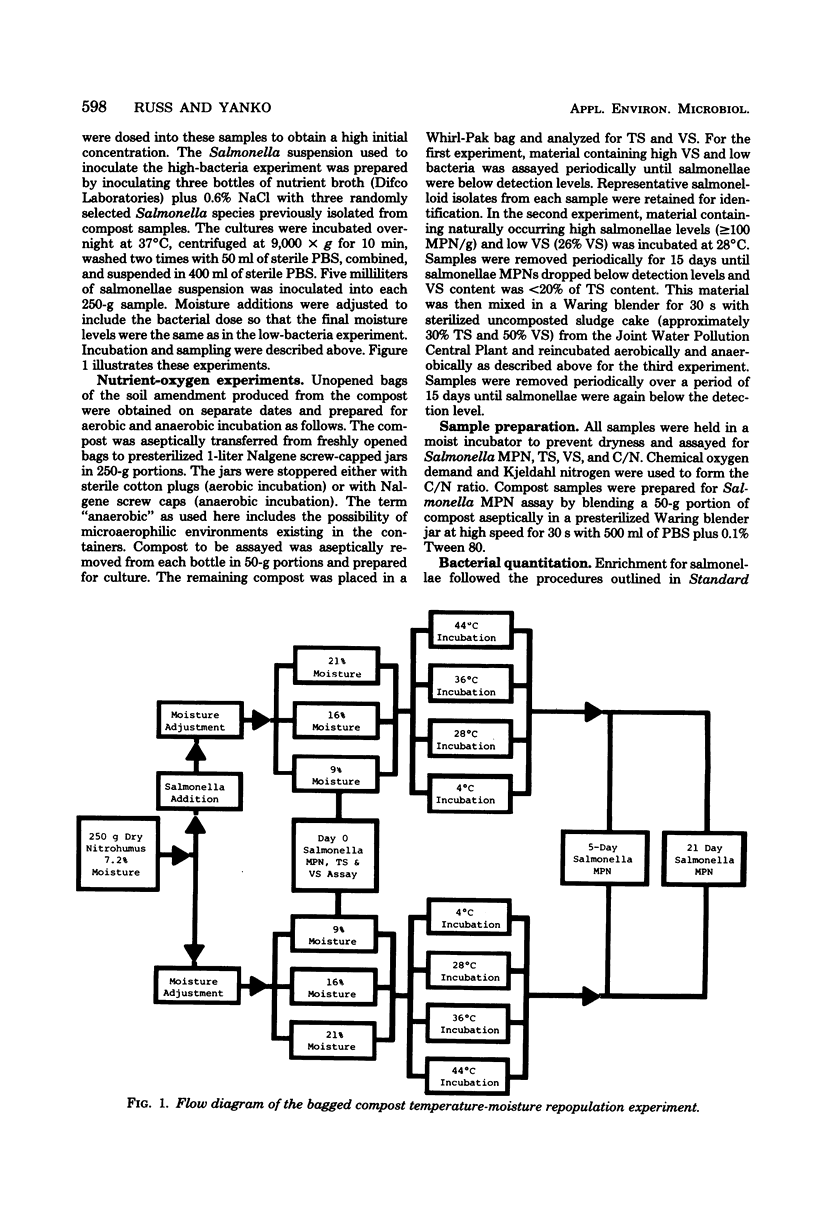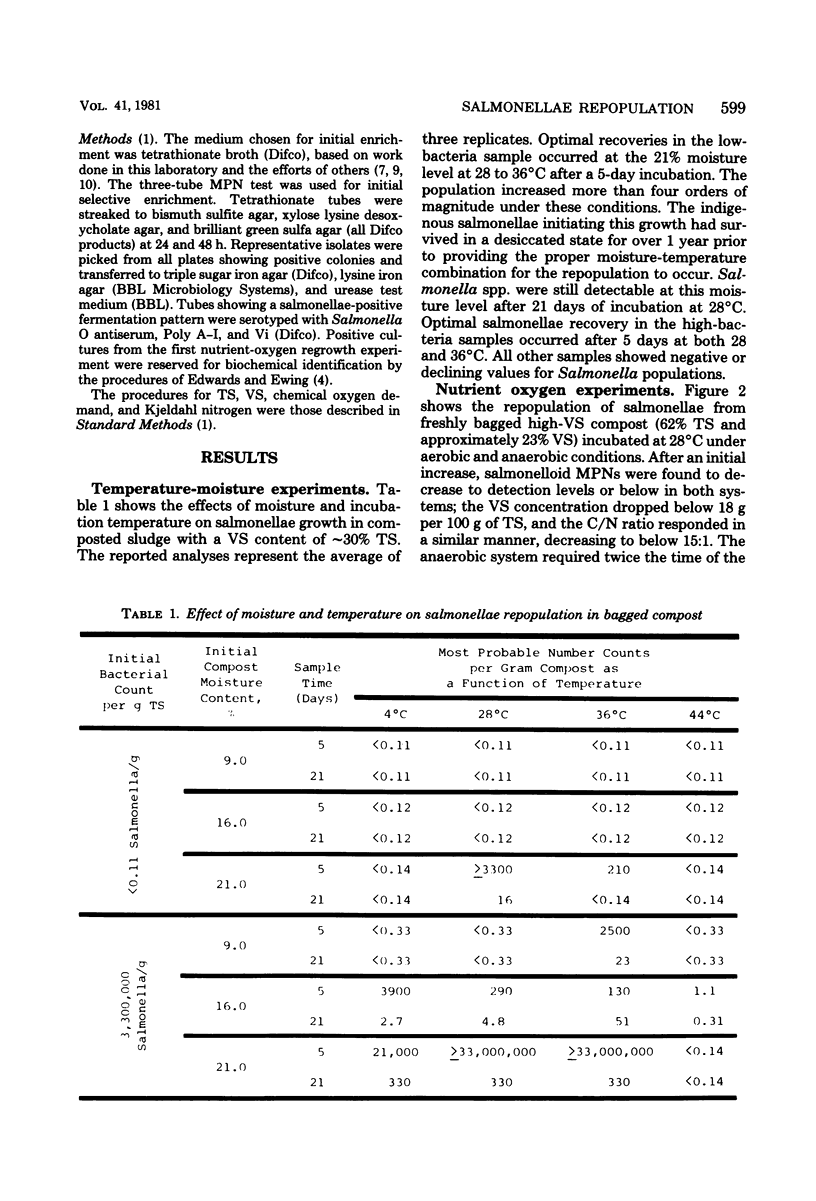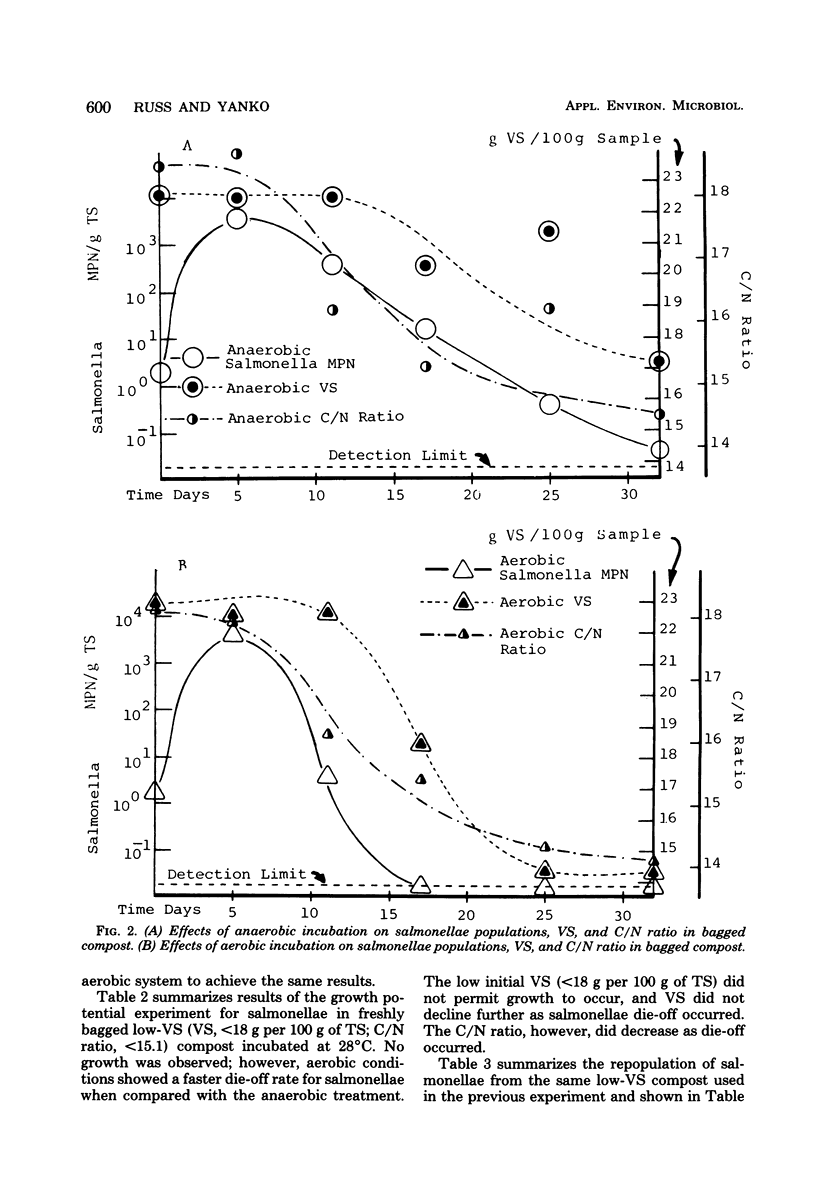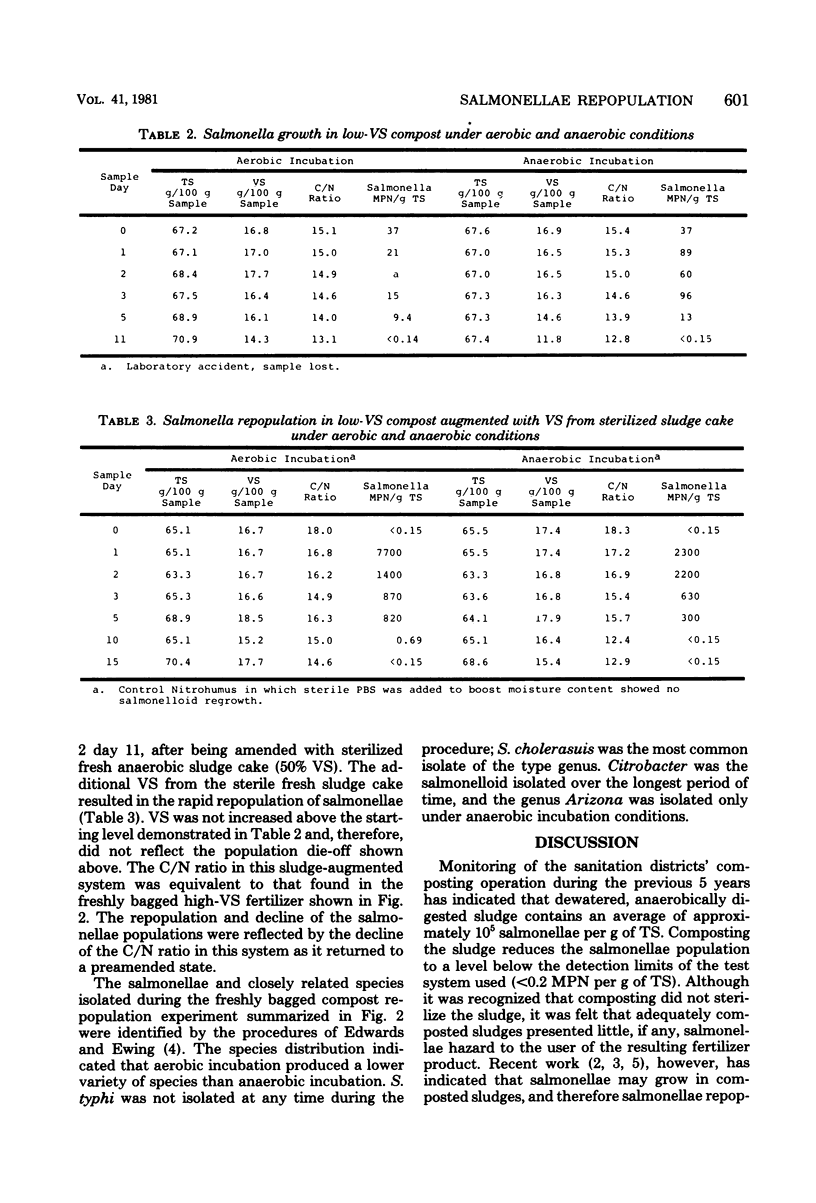Abstract
The repopulation potential and recovery of Salmonella sp. and their close relatives Arizona spp. and Citrobacter spp. in sewage sludge which had been composted was examined. Salmonellae growth in previously composted sludge was found to occur in the mesophilic temperature range (20 to 40 degrees c), require a moisture content of greater than or equal to 20%, and require a carbon/nitrogen ratio in excess of 15:1.
Full text
PDF





Selected References
These references are in PubMed. This may not be the complete list of references from this article.
- Brandon J. R., Burge W. D., Enkiri N. K. Inactivation by ionizing radiation of Salmonella enteritidis serotype montevideo grown in composed sewage sludge. Appl Environ Microbiol. 1977 Apr;33(4):1011–1012. doi: 10.1128/aem.33.4.1011-1012.1977. [DOI] [PMC free article] [PubMed] [Google Scholar]
- Kafel S., Bryan F. L. Effects of enrichment media and incubation conditions on isolating salmonellae from ground-meat filtrate. Appl Environ Microbiol. 1977 Sep;34(3):285–291. doi: 10.1128/aem.34.3.285-291.1977. [DOI] [PMC free article] [PubMed] [Google Scholar]
- Smeltzer T. I., Duncalfe F. Secondary selective enrichment of salmonellae from naturally contaminated specimens by using a selective motility system. Appl Environ Microbiol. 1979 Apr;37(4):725–728. doi: 10.1128/aem.37.4.725-728.1979. [DOI] [PMC free article] [PubMed] [Google Scholar]
- Thomason B. M., Dodd D. J., Cherry W. B. Increased recovery of salmonellae from environmental samples enriched with buffered peptone water. Appl Environ Microbiol. 1977 Sep;34(3):270–273. doi: 10.1128/aem.34.3.270-273.1977. [DOI] [PMC free article] [PubMed] [Google Scholar]


